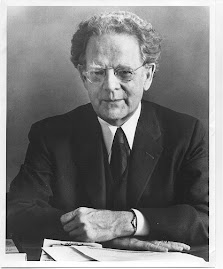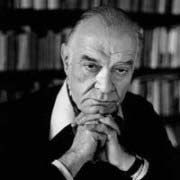
I think this blog-thing lends itself to simplification -- which perhaps serves a good purpose: focused rhetorical starting points for discussion.
In that spirit, let's start with a rhetorical simplification of Jung/Campbell: you need pre-christian symbols to interpret art.
I am reacting toward something I realized about Campbell: against orthodoxy, he embraces dualist inspired literature; and, again, against orthodoxy, he embraces Pelagianism (which he says is Irish and so Irish literature is etc. etc.). Now, on the face of it, it seems that the two heresies are exact opposites; and so Campbell is consistent only in being against orthodoxy. Seems kind of kooky -- his own little axe to grind. But, charitably, what is the point here? Is there a hermeneutical p.o.v., at least as that addresses artworks/literary works, that requires that we put orthodox theological beliefs, at least, to the side?
(I guess there have been Christian theologians quite comfortable with asserting the basic inconsistency of orthodox faith and art.)
It makes me wonder when something gets to count as "pre-christian." I mean the standard examples of goddess, anima, hero, shadow, sacrifice, rebirth, trickster, garden, fountain, underworld, sky-dome, etc. -- what does it mean to give those a specific theological interpretation? And if you do, how difficult is it to say that the christian meaning "includes" the pre-christian?
Don't we need to make a distinction? -- (1) symbolic material needed for any (aesthetic) interpretation whatever, (2) the specific moral or theological message/theme we give to that material. In other words, I am trying to find a way of taking the basic archetypalist point without necessarily embracing the proposed "moral of the story."
I'll end with an example. Jung/Campbell say that the serpent in the garden is a symbol of the unity of opposites; and that Eve is a symbol of the feminine, which is in some way a-tuned to that kind of wisdom. Now -- what must a christian reject in this reading? Specifically, can one just re-read the basic message/outcome of that reading, or is it necessary to eliminate the whole symbol-reading-hermeneutic orientation? Obviously, a christian would have to reject the idea that the Genesis story is simply an attempt to repress the true moral of this story. But what else?






3 comments:
I’ve just finished reading a lightly edited version of the Old Testament to Nicholas. The stories are filled with vindictiveness, revenge and brutal mindless murder. Nicholas literally had nightmares of being blinded, and begged me to stop. The sadistic father that I am, I insisted that it was necessary for his cultural literacy, if nothing else (even though at this point in time, there is something emetic about such talk). ‘God’ is frequently depicted as suggesting mass murder of entire peoples. What to do if you’re a Jew? You spend 2500 years writing the Talmud, reinterpreting this unacceptable theology/morality. Instead of killing people, perhaps this is reinterpreted as fighting and overcoming immoral impulses. The people are allegorical. It still astounds me how you are supposed to derive a moral religion from this source material.
Christians don’t have an official Talmud; so we are stuck with the OT being part of our tradition. You either renounce Christianity and become an atheist, or you do the Campbell/Jung thing and become a liberal/rational theologian.
Isn’t it the case that the more we regard aesthetic material as morally acceptable and reflecting what we take to be current realities, the less symbolic we need to regard the material? I’m currently reading Dostoevsky’s “The Devils.” A certain kind of “La Dolce Vita” decadence is depicted, among other things. The moral perspective of the narrator is mostly fine with me and doesn’t need to be reinterpreted or distanced and thought of as symbolic. The characters do seem like ‘types’ to a degree. They represent various life choices and ways of behaving that are more or less still options for us. Dostoevsky does seem to be displaying various moral choices with differing assumptions and consequences. They are mostly live options for us.
James talks about live and dead options. It seems conceivable to me that at some point in the future the characters of ‘The Devils’ will be so culturally remote that the personalities depicted may become unrecognizable, their beliefs and behaviors too far removed from contemporary culture to be live options; just as nobody can literally believe in Zeus anymore.
Although interpretation is omnipresent and inescapable, that we are interpreting and that symbols are being employed only needs to be explicit when the surface meaning is boring, remote, and/or unacceptable. Similarly, we can take context for granted when interpreting modern European art; but if we go back 200 years, we need to study context and make it explicit, so that connections with context which may exist in the artwork become clearer (i.e., any meaning it may have). Already with ‘The Devils,’ an annotated version is helpful.
Since the Garden of Eden is and will remain an important aspect of our cultural heritage, and is something all readers are familiar with, finding a profound way of interpreting it seems an important exercise. I don’t know that it’s very interesting to argue about precisely what the snake symbolizes. What the snake symbolizes will depend on the story one wishes to tell. If you can manage a certain plausibility in the interpretation, and the interpretation speaks to live options for us now, then I’m all ears. Hermeneutics offers the possibility of revivifying dead options.
Fantastic. The story-hour anecdote is fabulously telling.
I am hearing you right in saying that you are not too worried about a reading being "christian" and that you are more concerned that it be "rational"? Or is that accurate only with respect to the OT? I thought you might want to chime in with the Girardian point about the uniqueness of the Bible tales (is what you said consistent with that idea? of does his point depend on what Bible story you choose?)
Are you saying that what is valuable in Jung/Campbell is not that it revives pagan symbology but that it is...what? psychologically accurate? --that is to say, when it is accurate...
I thought your point about reverting to symbolism only when unsatisfied with the surface text was illuminating and to the point. It makes me wonder about my immediate inclination to go below the surface of the text. I guess there is something in modern prose that requires that we respond to it in terms of "would you do that if you were in that situation?" sort of thing. Of course this is a typical way of approaching a text in teaching, and one that I usually assume is my intellectual duty to undercut -- as if it misses the text as aesthetic object or something. Granted a lot of the high school texts are otherwise "boring" -- but, perhaps some re-positioning is in order. Thanks!
Post a Comment